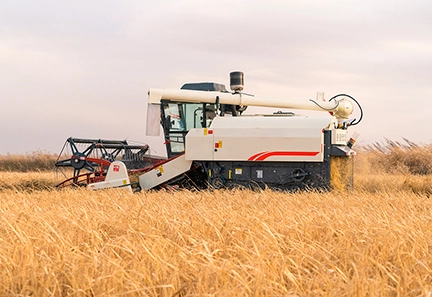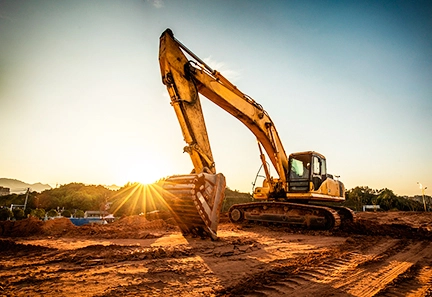Hydraulic oil is the working medium of the hydraulic transmission system. Generally, it is more suitable to work in the range of 35-60°C. When the hydraulic system is working, pressure loss, solvent loss and mechanical loss will be converted into heat energy to increase the oil temperature. The change of the oil will cause the viscosity of the oil to change, which will lead to the instability of the movement speed of the mechanical system.
1. It affects the life of hydraulic oil and hydraulic components, accelerates the oxidation of the oil, and causes the oil to deteriorate;
2. Excessive oil temperature will seriously affect the stability of hydraulic oil, thereby affecting the sealing, life and transmission efficiency of the entire hydraulic system.
Therefore, while monitoring the normal temperature rise of the hydraulic system, it should be able to detect the abnormal temperature rise of the hydraulic system in time, and find out the cause and eliminate the fault in time.
The power of the hydraulic system is excessive, and there is a large amount of energy loss during the working process, which makes the oil temperature too high; the specification of the hydraulic components is unreasonable, the capacity of the components used is too small, and the flow rate is too high; the system circuit design is not good, the efficiency is too low, and there is redundancy Inappropriate components and circuits; improper throttling mode; the system has no effective relief measures during the non-working process, so that a large amount of pressure oil loss is converted into oil heat; the hydraulic system is over-pressed, making it in the non-working cycle There is a large pressure loss, causing the oil temperature to be too high. Improvements can be made to the above-mentioned unreasonable designs.
The most common problems are unreasonable pipeline design and installation, and untimely maintenance and cleaning of pipelines, resulting in increased pressure loss, which should be improved during commissioning and maintenance. If the viscosity of the selected oil is too high, replace the oil with a suitable viscosity; if the pipeline is too thin and too long to cause excessive resistance and energy loss of the oil, you should choose suitable size pipelines and valves to shorten the pipeline as much as possible length, appropriately increase the diameter of the pipe, and reduce the bending radius of the pipe.
After the air enters the circuit, it will circulate with the oil in the high-pressure and low-pressure area, and will be continuously mixed in, dissolved into the oil or freed from the oil, resulting in pressure shock and a sharp rise in oil temperature, resulting in oxidative deterioration of the oil and Parts are corroded. Therefore, measures should be taken to prevent internal and external leakage at the joints and fit clearances of the hydraulic pump, reduce volume loss, and completely remove the air in the circuit.
(1) In order to prevent air from being brought into the oil return pipe when returning oil, the oil return pipe must be inserted under the oil surface.
(2) After the inlet filter is blocked, the suction resistance increases greatly, and the air dissolved in the oil is separated, resulting in the so-called cavitation phenomenon.
(3) Care should be taken not to leak air into places where the suction pipe fittings and pump shaft seals are below atmospheric pressure.
(4) The liquid level of the oil tank should be as large as possible, the suction side and the oil return side should be separated by a partition, and an oil return filter with a liquid flow diffuser should be selected to achieve the purpose of eliminating air bubbles.
(5) The highest part of the pipeline and hydraulic cylinder must have air holes, and the air in them should be released when starting.


